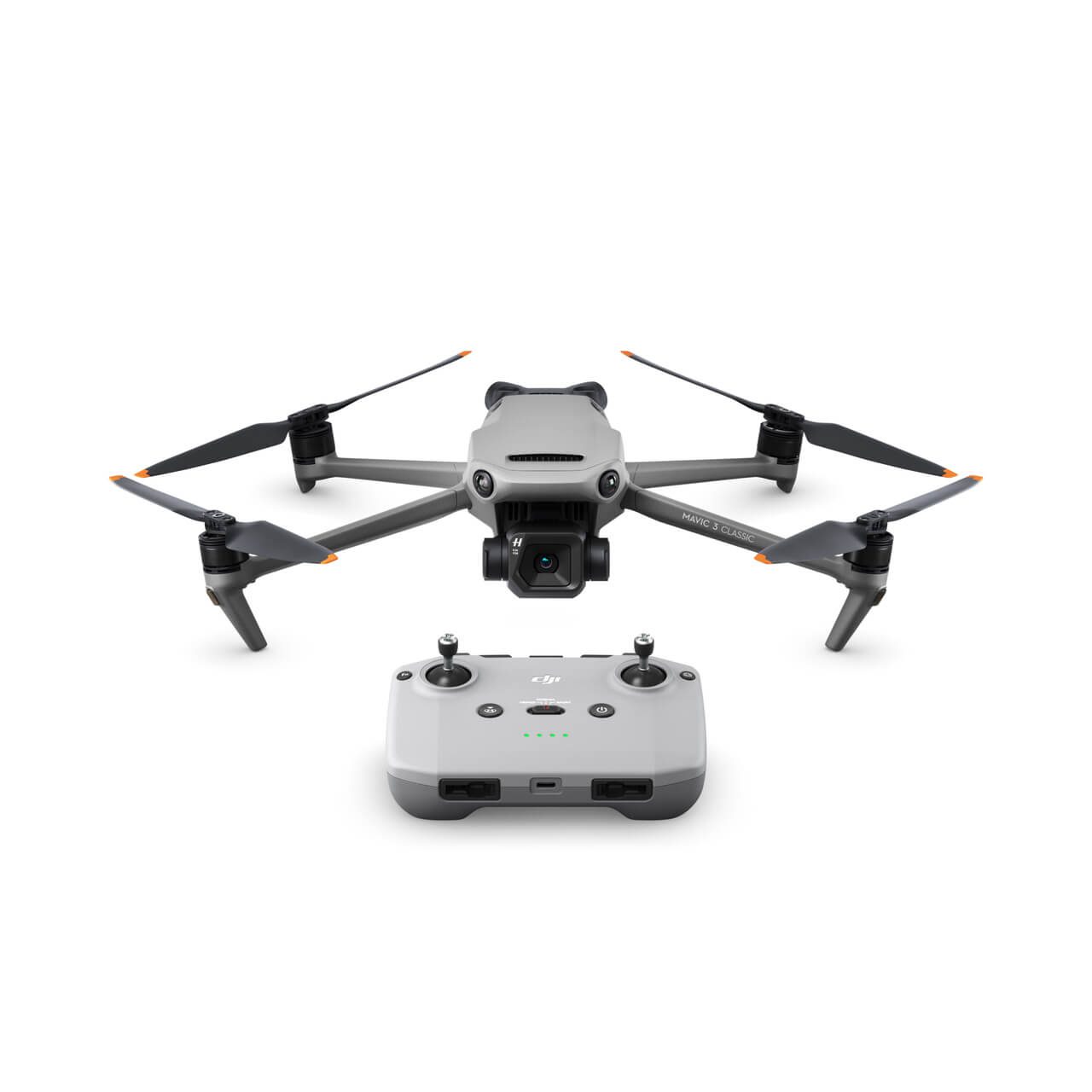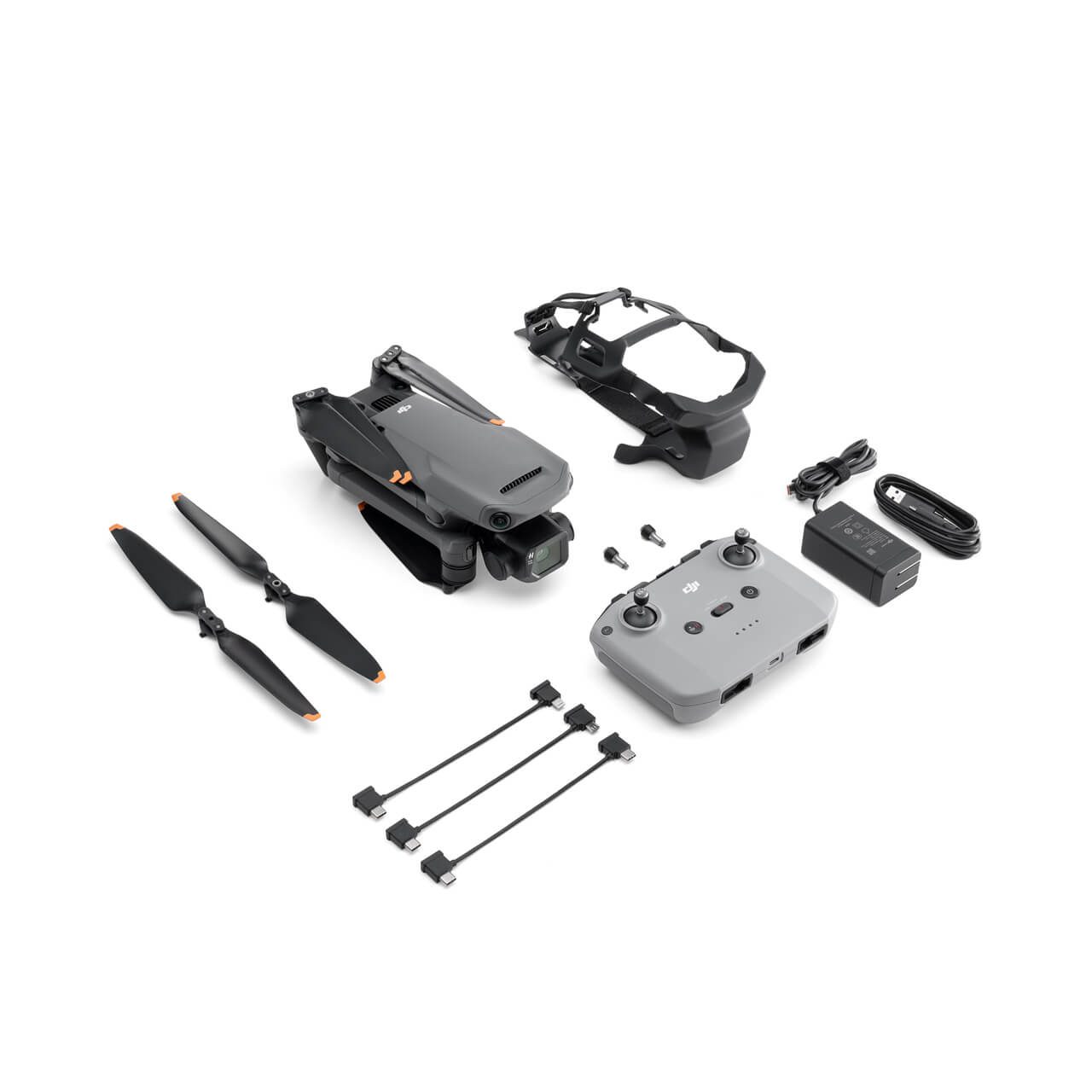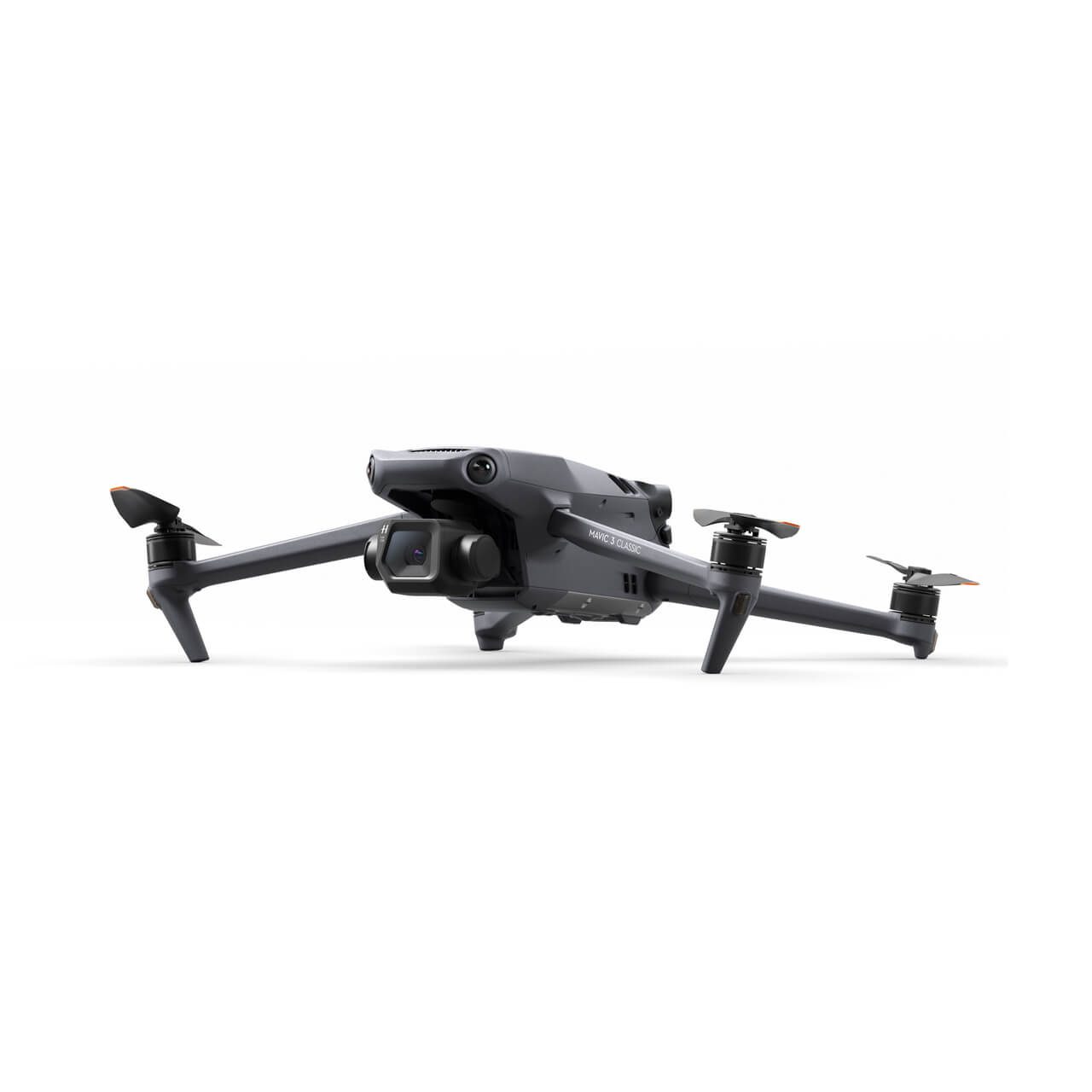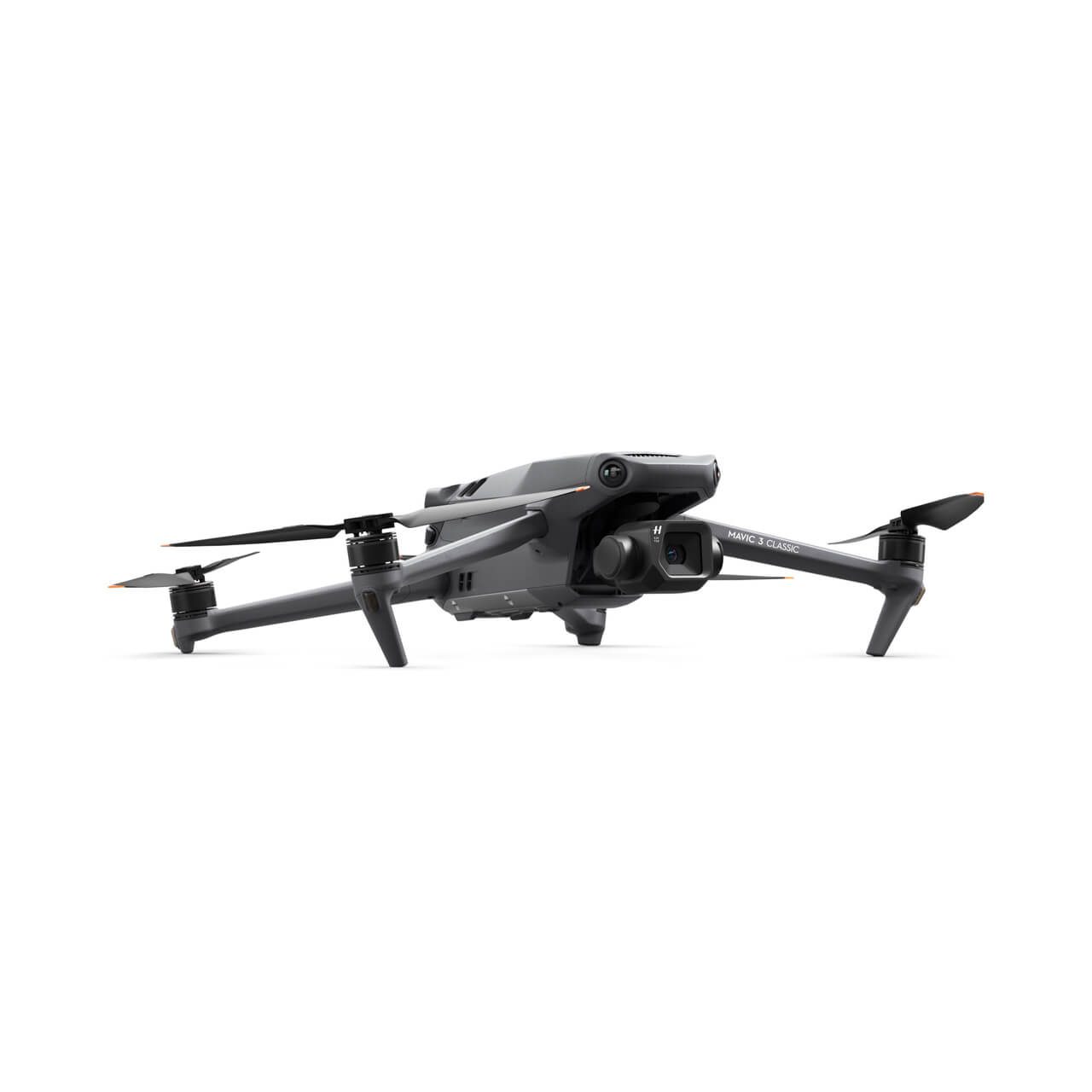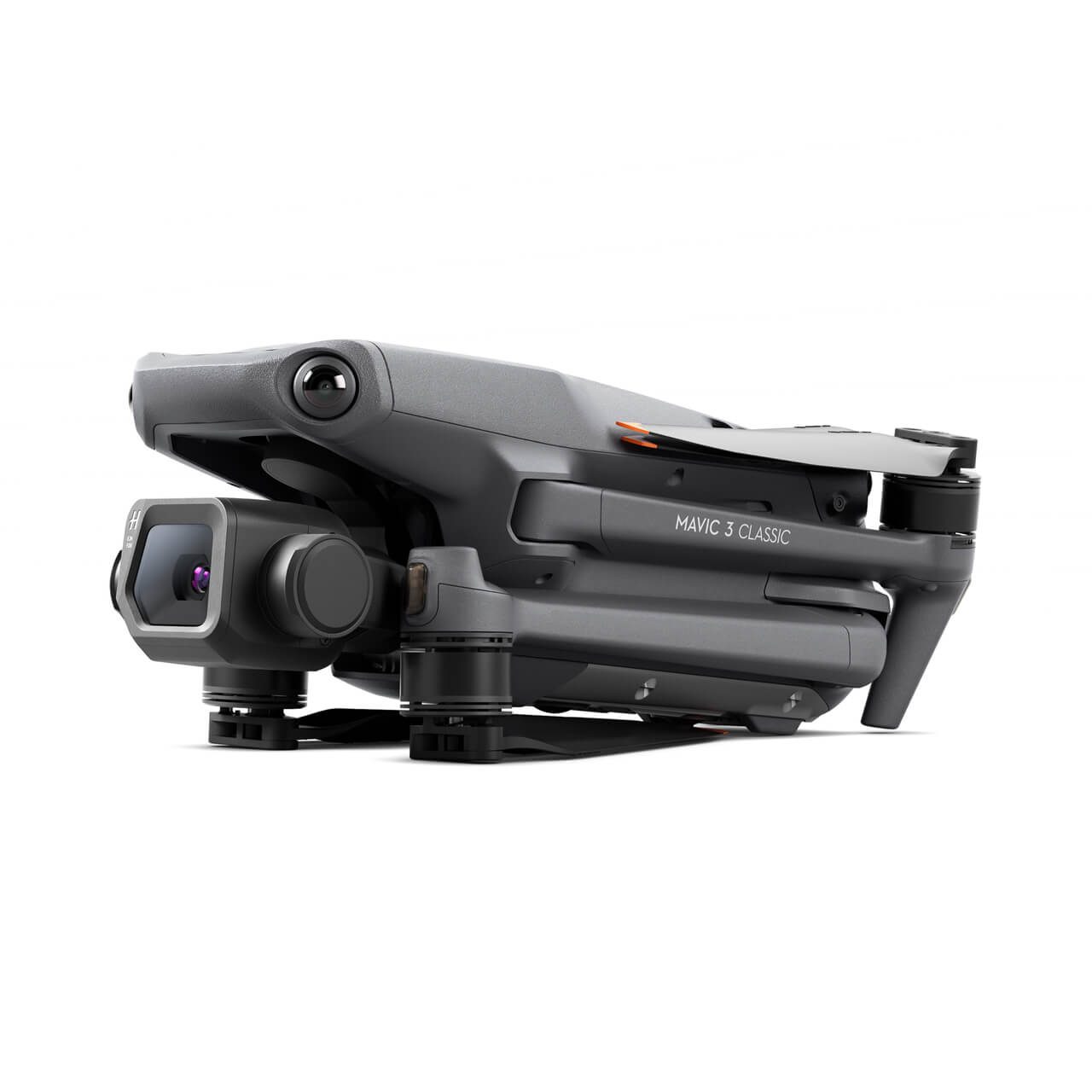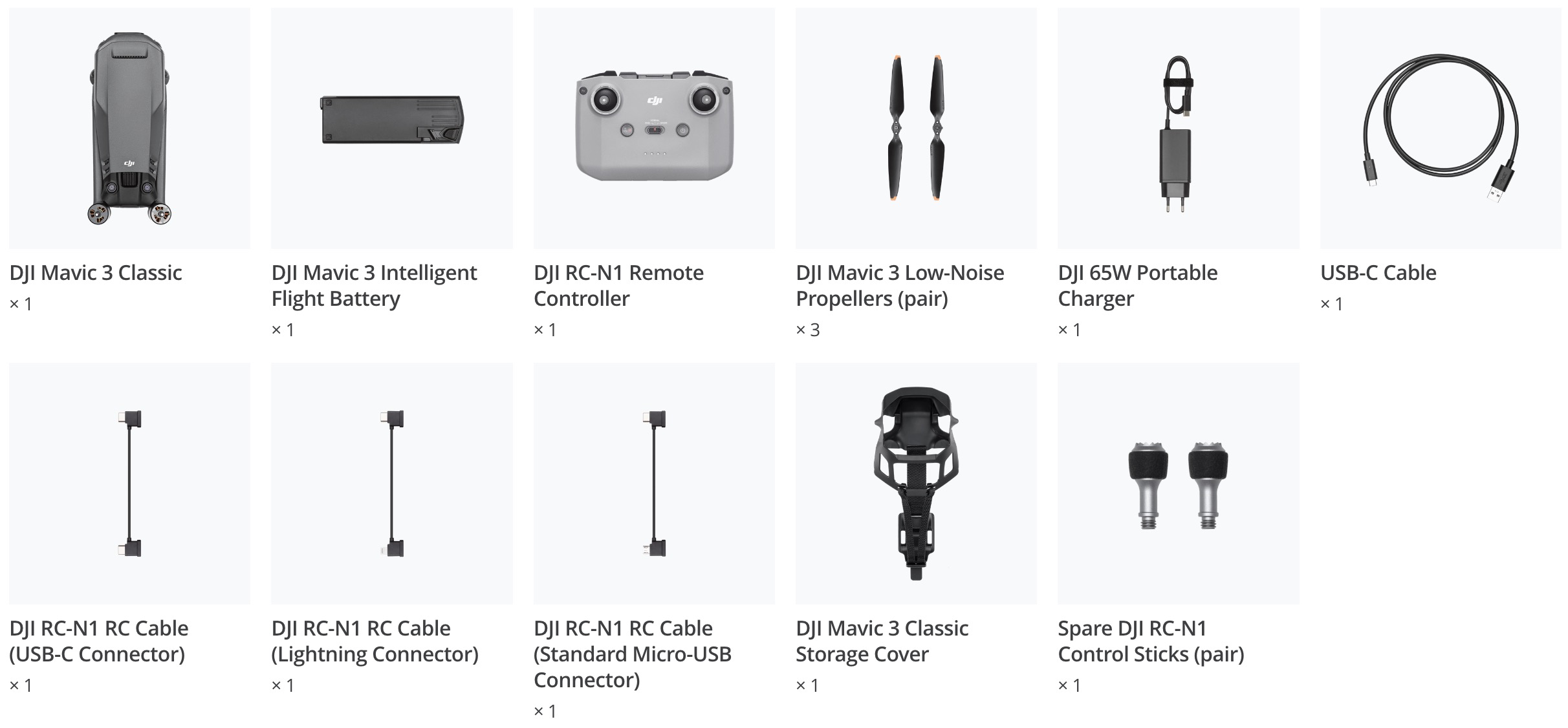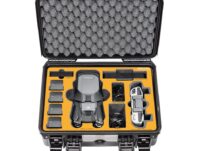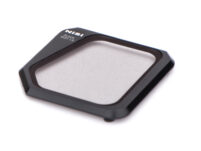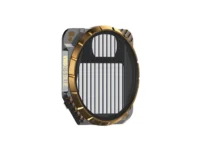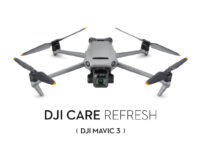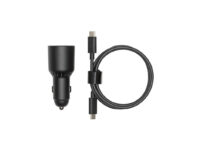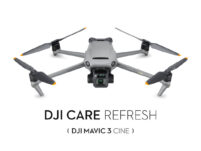Kirjeldus
DJI Mavic 3 Classic ühendab suurepärase lennujõudluse võimsa kaameraga, mille Hasselblad on spetsiaalselt M3 Classicu jaoks välja töötanud. Need tehnilised lahendused aitavad drooni operaatoril saavutada suurepärase kvaliteediga detailirikkaid ja erksate värviga professionaalsel tasemel pilte.Hasselbladi kaamera on loodud inspireerimaks!
- Hasselblad 4/3 CMOS kaamera
- Professionaalsel tasemel pilt 5,1K/50 kaadrit sekundis
- Hasselblad looduslikud värvid
- Maks. lennuaeg 46 min
- Takistuste tuvastamine igas suunas
- Kõrge kvaliteediga video edastuskaugus kuni 15 км
- Täiustatud “Tagasi koju” funktsioon
- Öörežiim video salvestamiseks
Rootsi kaubamärk Hasselblad kavandas ja valmistas spetsiaalselt Mavic 3 seeria jaoks mõeldud lennukaamera L2D-20c. Seade sisaldab professionaalset 4/3 suurusega CMOS-sensorit, mis on paigutatud väga kompaktselt. Hasselbladi rangeid standardeid rakendatakse nii riistvara jõudlusele kui ka tarkvaraalgoritmidele, viies pildikvaliteedi uuele tasemele.
Hasselblad Natural Color Solution (HNCS)
Hasselbladi Mavic 3 Classic kaamera suudab taasesitada loomulikke värve samamoodi nagu teised selle kaubamärgi kaamerad. Selleks varustati kaamera L2D-20c objektiiviga, mis vastab samadele rangetele standarditele ja millel on sisseehitatud HNCS tehnoloogiaga pikslite kalibreeritud sensor. Tänu sellele suudab kaamera iga päästiku vajutusel jäädvustada ehtsaid ja eredaid värve.
Professionaalsel tasemel pilt 5,1K/50 kaadrit sekundis
Saate filmida üliteravaid ja detailirikkaid videosid. Samuti saate supersamplingu tehnoloogiat kasutada teha videot formaadis 4K/60 kaadrit sekundis.
Rohkem lennuaega
Mavic 3 Classicus saate kasutada vastavalt ühilduvaid Mavic 3 seeria lennuakusid. Need akud tagavad kuni 40 minutit hõljumist ja kuni 46 minutit lendu.
Takistuste tuvastamine igas suunas
Mavic 3 Classic on varustatud APAS 5.0 Pilot Assistance Systemiga ja suudab lennu ajal tuvastada objekte mis tahes suunas. Selliste objektide kiire tuvastamine aitab droonil neid sujuvalt vältida. Algajad piloodid saavad lennata hõlpsalt ja enesekindlalt, jäädvustades samal ajal suurepäraseid fotosid ja videoid.
Ülim täpsus
Kõrgtasemeline detsimeetri täpsusega positsioneerimine muudab Mavic 3 Classicu hõljumisel äärmiselt stabiilseks. See mitte ainult ei taga selgemaid pika säritusega võtteid, vaid aitab salvestada ka sujuvamaid intervall-võttetega videosid.
Täiustatud RTH funktsioon
Kasutage täiustatud funtsiooni – Automaatne koju Naasmine (RTH), mis võimaldab droonil baasi naasmiseks iseseisvalt kavandada parima võimaliku lennutrajektoori. Droon lendab eelseadistatud kõrgusel ja leiab tee koju, kasutades täielikult ära täiustatud RTH-funktsiooni.
Püsikiirusehoidja
Juhtige Mavic 3 Classicut lendamiseks soovitud suunas, ilma et peaksite juhtimisnuppe pidevalt vajutama. See mitte ainult ei muuda pikamaalende lihtsamaks, vaid aitab vähendada ka käeshoitavat vibratsiooni. Nii on kaamera liikumine sujuvam.
Võimas videoedastustehnoloogia O3+ abiga
Videoedastustehnoloogia maksimaalne ulatus on kuni 15 km, mis võimaldab lennata oluliselt kaugemale täiesti murevabalt. O3+ süsteemi abil saate voogesitada reaalajas videot formaadis 1080p/60 kaadrit sekundis. See tähendab, et kaamera pilt kuvatakse omadustega, mis on lähedased sellele, mida kaamera tegelikult “näeb”. Ja lisaks sellele on piloodil palju lihtsam Mavic 3 Classicut juhtida, kuna droon on muutunud teie juhtimise suhtes palju tundlikumaks.
KKK
Compared to DJI Mavic 2, what major upgrades does Mavic 3 have?
The DJI Mavic 3 Series includes DJI’s latest flagship consumer drones. Compared with Mavic 2, Mavic 3 has substantially upgraded camera performance, integrating a 4/3 CMOS Hasselblad camera and a lightweight 24mm equivalent tele camera. Mavic 3 is capable of capturing 5.1K/50fps and 4K/120fps videos, and Mavic 3 Cine even supports Apple ProRes 422 HQ, Apple ProRes 422, and Apple ProRes 422 LT codecs, offering higher image quality and greater flexibility during post-editing. In addition to the camera system, the Mavic 3 Series also delivers a comprehensively upgraded flight experience. The flight time has been extended to 46 minutes, and O3+ extends video transmission distance up to 15 km.* Obstacle sensing has been developed into a truly omnidirectional system, with a more powerful APAS 5.0 and Advanced RTH to give users greater peace of mind during flight.
* Unobstructed, free of interference, and when FCC-compliant. Maximum flight range specification is a proxy for radio link strength and resilience. Always follow local rules and regulations and fly your drone within your visual line of sight unless otherwise permitted.
What app is required for using the DJI Mavic 3 Series?
The DJI Fly app.
How many versions does the DJI Mavic 3 Series have and what are the differences between them?
The DJI Mavic 3 Series comes in three versions: Mavic 3 Classic, Mavic 3, and Mavic 3 Cine. Mavic 3 Classic has one 4/3 CMOS Hasselblad camera, and the gimbal does not support gimbal lock. Mavic 3 has two cameras: in addition to a Hasselblad camera, it has a 162mm tele camera and supports gimbal lock. On top of these Mavic 3 functions, Mavic 3 Cine supports Apple ProRes 422 HQ, Apple ProRes 422, and Apple ProRes 422 LT codecs and comes with a built-in 1TB SSD for high-speed data storage.
Does the DJI Mavic 3 Series support the DJI Goggles Series and the DJI Motion Controller Series?
The DJI Mavic 3 Series is only compatible with DJI Goggles 2, DJI Goggles Integra, and DJI RC Motion 2.
What are the differences between DJI Mavic 3 Classic combos?
DJI Mavic 3 Classic (Drone Only) does not include a remote controller or charger. You can use an already-owned DJI RC-N1, DJI RC, or DJI RC Pro to control the drone. The other two combos include a remote controller and charger. They are DJI Mavic 3 Classic, which contains a DJI RC-N1 remote controller, and DJI Mavic 3 Classic (DJI RC), which contains a DJI RC remote controller. You can choose a combo based on your needs.
What precautions should be taken when using Vision Assist?
If you are using DJI RC, once you enable Vision Assist, the primary video transmission quality will be reduced to 720p, and the camera view displayed on the screen may appear slightly blurrier than before.
What remote controllers are supported by the DJI Mavic 3 Series?
DJI RC Pro, DJI RC, and DJI RC-N1.
What is the transmission range of the DJI Mavic 3 Series?
When using the DJI RC Pro, DJI RC, or DJI RC-N1 remote controllers, the maximum transmission range is 15 km.*
* Unobstructed, free of interference, and when FCC-compliant. Maximum flight range specification is a proxy for radio link strength and resilience. Always follow local rules and regulations and fly your drone within your visual line of sight unless otherwise permitted.
How can I set the video transmission feed to 48/50/60fps?
Once video recording is set to 30fps or above at any resolution, the frame rate of the live feed will automatically switch to 48/50/60fps depending on the mobile phone decoding capability and transmission bandwidth.
Does DJI Mavic 3 Series support simultaneous control by two remote controllers?
No.
Does the DJI RC-N1 remote controller support O3+ transmission when used with the Mavic 3 Series aircraft?
Yes.
- Once it has been linked with a DJI Mavic 3 Series aircraft, the DJI RC-N1 remote controller will automatically perform the corresponding firmware update. Just like DJI RC Pro, the RC-N1 supports O3+ video transmission.
- In an unobstructed environment free of interference, both controllers can support a maximum transmission range of 15 km with FCC compliance.*
- Both remote controllers support 1080p/60fps live feeds.
When used with different aircraft, both remote controllers will automatically select the corresponding firmware version for updating and support the following transmission technologies enabled by the hardware performance of the linked aircraft models:
- DJI Mini 2 / DJI Mavic Air 2: O2
- DJI Air 2S: O3
- DJI Mavic 3: O3+
* Unobstructed, free of interference, and when FCC-compliant. Maximum flight range specification is a proxy for radio link strength and resilience. Always follow local rules and regulations and fly your drone within your visual line of sight unless otherwise permitted.
What advantages does DJI RC Pro have compared with the DJI RC-N1?
Compared with DJI RC-N1, the DJI RC Pro features:
- Easy setup and quick start, which means the remote controller is instantly linked to the aircraft after powering on and there is no need to worry about interference from calls or text messages during flight.
- The built-in high-bright screen ensures constant high-bright display all day, without the risk of lowered screen brightness caused by overheating.
- DJI RC Pro is also integrated with a powerful processing platform for a more stable and smoother system operation. It also has excellent sound and image quality and supports video output expansion.
- Dual-spring control sticks for a smoother and more precise control experience.
- Compared with the 1T2R antenna configuration of DJI RC-N1, DJI RC Pro uses a 2T4R configuration that is more resistant to interference and delivers more stable transmission performance in urban areas with signal interference.
- A dial has been added to DJI RC Pro exclusively for camera parameter adjustments, supporting more customizable button functions for more convenient operation.
Are there any upgrades to the propellers used on the DJI Mavic 3 Series?
The propeller structure adopts a new design, with the edges made of a softer material. It not only reduces noise during flight, but also causes less damage to people or other objects in the event of an accident.
What should I pay attention to when using the DJI Mavic 3 propellers?
Replace the propellers in a timely manner to ensure safety, especially if any propeller is damaged or misshaped.
How do I attach the DJI Mavic 3 Series propellers correctly?
Attach the propellers with gray markings on the motors with the same markings, and attach the other two without gray markings on the corresponding motors.
How is the flight time of DJI Mavic 3 Series measured?
The flight time was measured in a controlled test environment. Specific test conditions are as follows: fly at a constant speed of 32.4km/h in a windless environment at sea level, with APAS off, AirSense off, camera parameters set to 1080p/24fps, video mode off, and from 100% battery level until 0%. Results may vary depending on environment, actual use, and firmware version.
Compared with the previous generation, what upgrades does the omnidirectional sensing system on the DJI Mavic 3 Series have?
The Mavic 3 Series can detect obstacles in all directions with extreme precision. Multiple sensing cameras with a wider range of detection help Mavic 3 respond to obstacles earlier. In a well-lit environment, Mavic 3 can avoid obstacles faster and more smoothly, capturing stable footage safely even when flying laterally or backward.
What improvements does ActiveTrack 5.0 have compared with the previous version?
ActiveTrack 5.0 tracks subjects in eight directions, bringing more creative possibilities. Embedded with the newest subject recognition technology, ActiveTrack 5.0 uses multiple vision sensors simultaneously to recognize a subject, differentiate it from other objects, and lock the subject in frame. It allows users to adjust tracking angles smoothly for more natural results. Thanks to new environment and subject-sensing algorithms, Mavic 3 responds earlier to subject movements and environment information, and plans a more optimum tracking route in advance to record smooth and stable footage.
What improvements does Advanced RTH have compared with the previous version?
Compared to the 20 meters of the Mavic 2 Series, the Mavic 3 Series has a maximum forward-sensing distance of 200 meters during RTH. During flight, Mavic 3 will use advanced environmental sensing technology to determine the safest, most energy-efficient flight route to return the drone to its home point.
What is the difference between normal bypass mode and Nifty mode for APAS 5.0?
In Nifty mode, the obstacle detection sensitivity is lowered. Bypass maneuvers will be less noticeable, which reduces the impact of obstacle avoidance movements on your footage.
Are there any upgrades to the QuickTransfer of the Mavic 3 Series compared with the previous version?
With the Wi-Fi 6 protocol, data transmission is even faster, with download speeds reaching up to 80MB/s. In addition, compared to DJI Mini 2, the Mavic 3 automatically selects the fastest transmission mode based on the current wireless environment without switching to Wi-Fi mode manually, making it easier to use.
How can I use the DJI 65W Portable Charger?
The DJI 65W Portable Charger comes with a connected 65W USB-C charging cable to charge Mavic 3’s intelligent flight battery (it is recommended to use this charging cable for charging the Mavic 3 battery). At the same time, you can connect the USB-A port on the DJI 65W Portable Charger with the remote controller using the Type-C Cable (data cable) in the box of Mavic 3 to charge the remote controller.
How long does it take to fully charge an Intelligent Flight Battery of the DJI Mavic 3 Series?
Approximately 96 minutes when charging with the connected 65W USB-C charging cable of the DJI 65W Portable Charger.
What are the highlights of the DJI Convertible Carrying Bag?
The well-designed DJI Convertible Carrying Bag can be converted between a shoulder bag and backpack to suit users’ portability needs.
- The shoulder bag configuration provides enough space for Mavic 3 and its accessories, offering a more convenient shape that makes items easily accessible.
- The backpack configuration provides enough space for Mavic 3 and its accessories, along with a 16-inch laptop and other small items for daily use, making it perfect for short trips.
Can I use other chargers with USB-C ports to charge the Mavic 3 battery?
Yes. However, to ensure charging efficiency, we still recommend using the DJI 65W Portable Charger. Other chargers at 60W or above supporting PPS/PD protocol are also recommended.
Can I charge Mavic 3 directly through the built-in USB-C port of the aircraft body?
Yes
The following accessories are currently compatible: 1. DJI RC 2. DJI RC Pro 3. DJI RC-N1 4. DJI Mavic 3 Intelligent Flight Battery 5. DJI Mavic 3 Low-Noise Propellers (pair) 6. DJI Mavic 3 Battery Charging Hub 7. DJI 65W Car Charger 8. DJI 65W Portable Charger 9. DJI Mavic 3 Propeller Guard 10. DJI Mavic 3 Storage Cover 11. DJI Convertible Carrying Bag 12. DJI 10Gbps Lightspeed Data Cable 13. DJI Mavic 3 Protector Case
